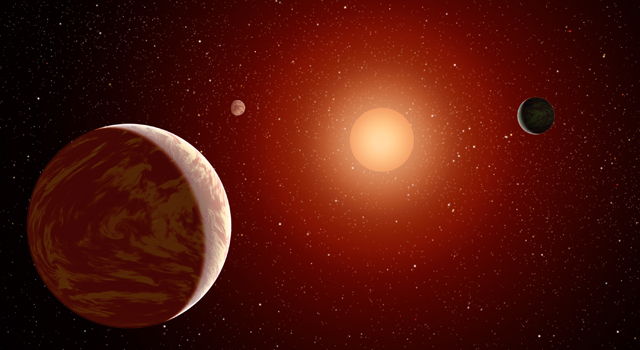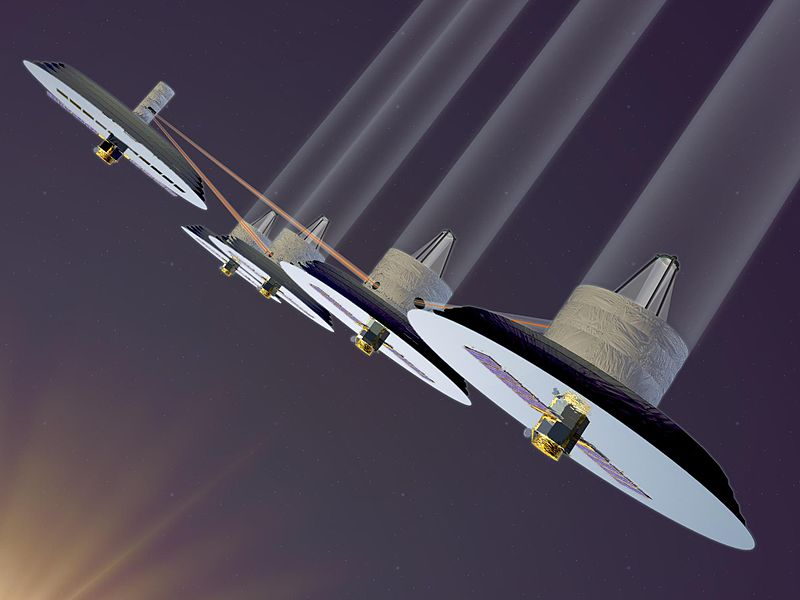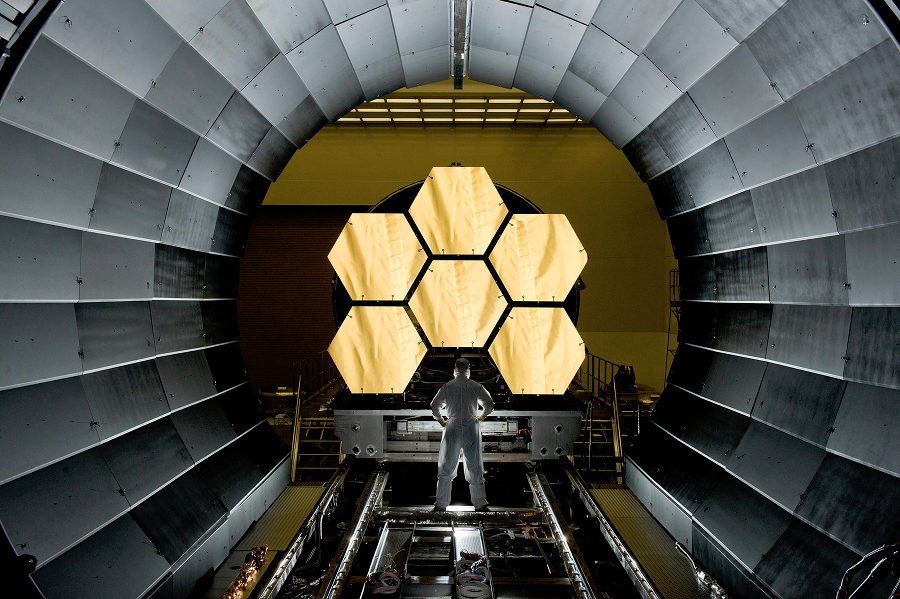Hunting for Alien Worlds (Part 5): The Future of Exoplanet Science

At the 2012 Astrobiology Science Conference, Astrobiology Magazine hosted a plenary session titled: "Expanding the Habitable Zone: The Hunt for Exoplanets Now and Into the Future."
Originally formulated as part of our "Great Debate" series, this panel of exoplanet hunters and thinkers held a lively discussion about some of the most important issues facing the search for and understanding of alien worlds orbiting far-distant stars.
You can read parts one, two, three and four on SPACE.com. Here is Part Five:
David Grinspoon: I want to switch gears and move on to our next topic for this afternoon's discussion. And that is the question of exoplanet missions, the state that we're in, what we've done, what we are going to do in the future. This is partly about policy, but partly about engineering. I see that Sara has brought some sort of machine with her; I hope it’s not a weapon, and maybe we'll hear about that. [Planets Large and Small Populate Our Galaxy (Infographic)]
But one thing when we are talking about the ground rules and topics for this discussion, we agreed we weren't just going to whine about the Decadal [Survey]. Because nobody wants to hear us get up and whine about the Decadal. But I think it’s fair to say there is some disappointment in this community that we don't have a clear plan for the kinds of mission a TPF, a Terrestrial Planet Finder-like mission, on the books that this community so desperately wants, and that we all feel is very important to really start to get at some of these questions of not just: Now that we know the planets are out there, what are they like? What can we really observe about them? And so it’s interesting not to whine but perhaps take a critical and constructive look at the Decadal process.
Obviously it seems that exoplanets have maybe fallen through the cracks. We have a Planetary and we have an Astrophysics Decadal process. And when we didn't have exoplanets, which was true for the previous Decadal, that worked fine. Planets were studied by planetary people and astrophysicists studied other things. But now all of sudden, planets are mostly not in the solar system and maybe our mechanisms for dividing the turf of the cosmos and how we fund those efforts are not adequate.
I personally was very involved in the Planetary Decadal, and I have a lot of respect for the people that run these things. I think in general the process works very well, and so I'm certainly not going to whine. But I do think there are some inadequacies both in this falling through the cracks and also the time scale. Because it’s a Decadal, there's good reasons for that, but things that are rapidly changing like the exoplanet revolution, we don't tend to keep pace necessarily with that. So what do you guys think of the current process and is there a way, are we going to need a change in that, in the way things are set up so that we can fully exploit the exoplanet revolution and its scientific potential?
Breaking space news, the latest updates on rocket launches, skywatching events and more!
Eric Ford: Well, I'll say we have one big choice to make. Which is, if people want to study habitable planets using the classical habitable zone definition, we have to decide how picky we want to be. Do we want to study planets that are in the habitable zone of M stars? That's these cool stars with these planets that have short orbital periods. They have stars whose spectra peak in the infrared. They are very different, but they meet that one criteria of being in the classical habitable zone. If that's what we want to do, that’s something we already have the information that technology can be working for. If we want to be pickier, and we want to study planets in the classical habitable zone of solar-type stars, well then we need to wait a bit longer and see just how common they are and figure out how large a telescope we need to build …
Sara Seager: We just heard how common they are. Ten times more common than Neptunes, 100 times more common than Jupiters.
[Laughter]
Eric Ford: Ok, if you want to look for Earth-size planets [that orbit their star in] less than thirty days, I think we know enough now to scope out that telescope's aperture. If you want to look for Earth-size planets at one AU around a solar-type star, I don't think we have a good enough understanding to make the investment to build that primary mirror yet. [The Nearest Stars to Earth (Infographic)]
Sara Seager: I think there is a bigger issue at stake here. So I will just remind everyone who is not an astronomer what's really going on. And that is if you think back, for people who either were alive or read history books decades ago. Right? Every place had their own backyard observatory. Mine from my alma mater, the University of Toronto was called the David Dunlap Observatory. It was sold for a huge sum to make the Dunlap Institute of the University of Toronto recently. So we all had that and that's what made astronomers go. You took data from your university's telescope and that was great.
Then we moved on to where people starting building bigger places in better climates. Better atmospheres, such as, in America that would have been Hawaii, that would have been South America. And things just got so exciting in astronomy that all the things that you could do at relatively low cost were done. So we had the same number of people, and the same cultures, who all want their own kind of thing, their own telescope that they'll share, at some level. But it is no longer really possible in astronomy today. And I think that is the larger issue we're facing over the Decadal, coupled with the demographic issue, where a lot of young people who fortunately don't pay attention to politics, because otherwise people would stop going into astronomy. We actually have a lot of young people, you go to a meeting like this, you go to an exoplanet meeting, and the demographics are lots and lots and lots of young people. But then the sort of more traditional areas of astrophysics, it’s flipped. And so the weighting of people who are making decisions is really not in favor of exoplanets right now. So I think you have those two things that we’re used to as astronomy, everyone at every wavelength division or object division, gets their community, and gets their telescope. And then you have the problem where it can't be sustained for generations to come because we have LISA for gravitational waves, we have TPF. I mean everyone has their own equivalent TPF. And that's where the problem really lies right now.
David Grinspoon: So, how do we solve it?
Sara Seager: It’s a problem because one further thing that I didn't mention was, exoplanets is built on basically a series of rogue individualists who go and do their own thing. And that particular group, they never really got ahead by cooperating. So its not really clear how this is going to be resolved. I am hoping the other panelists will contribute to that part of the discussion.
David Grinspoon: Please, other panelists. How do we solve it?
Vikki Meadows: Not sure about solving it, but I did want to make a point of Eric's, which is that he's right in that the M dwarf planets are easier to do and can be done faster than the FGKs [stars]. But we tend to have this kind of bias that we want these things to be sort of solar-like because that’s where we think habitable planets will be. And so, there has always been this focus on FGK for TPF. And the designs are basically designed to get those. The M dwarf planets are very difficult for types of missions. But the Exoplanet Task Force, which I think is a great name for a focus group; I think they should have uniforms. The Exoplanet Task Force came out with this two-pronged approach that said, "Yeah, let’s do the M dwarf stuff sooner," and then when we eventually develop, as Eric said, this ability to predict how many planets we are going to find about around other stars, the so-called eta-Earth that Kepler is working on, then we can go for that sort of mission.
Sara Seager: Yes, if I can just interject, I actually spent 400 hours on the Exoplanet Task Force. That's not the current committee today, that was supposed to feed into the Decadal, which actually was not paid attention to, and indeed we came up with a two-pronged approach. Let's do the M star planets now. They are accessible to discover them, some of them from the ground. James Webb could hopefully observe them. And we invest in technology that can find the Sun-like stars. So, yeah that was the two-pronged approach. We really wanted to do it all. And we could do it all, if exoplanets was really the main or the dominate part of astronomy.
Dirk Schulze-Makuch: I don't have a solution either, but isn't Astrobiology basically, as a field, in the same shoes? I mean some of us started out as physicists, some as geologists, some as biologists, some of us as chemists. But what unites us is basically the desire to find life, and to connect us all and to make sense of what the universe is and on what planets we find life. One thing that is in our favor is that we do have a lot of public interest and public support. And if we can channel that somehow, it worked for a while, or that it may actually still work and hopefully still works for a while, with the Astrobiology Institute and the Astrobiology Initiatives. And something would have to happen perhaps with the astrophysics and astronomy community too. That there is really some kind of interest group and some kind of a momentum-building.
Sara Seager: You know that goes back to where I mentioned about the rogue individualists who do their own thing. And I will give you another example of that. Because I don't want to criticize the Decadal approach. I chose not to be involved with it for reasons that I will give you a little bit later. But really some people criticized the exoplanet community. And they said that we divided and conquered ourselves. And that we didn't get together like you suggest and say here's what we'll put forward, all of us together, but we had the micro-lensing community and the direct imaging folks, and we had the transmission spectra people. And indeed we saw this. And if you were a sociologist and wanted to look at this carefully, you could actually go and read the white papers that were actually submitted. And you would see that a lot of the exoplanet ones, people spent as much time like criticizing another technique as their own. And so some people felt like it was partly our own fault. I disagree with this. But we didn't become unified and [say] here's the one we want to do. So then it was left up to the Decadal to actually make that choice for us.
Eric Ford: Well I would maybe agree with disagreeing with those people, in the sense that the Decadal Survey sort of had a difficult challenge of agglomerating different interests of different groups. For example, WFIRST, one mission that was recommended, involved taking one possible benefit to exoplanets and one possible benefit to cosmologists, and combined them in a forced marriage that maybe would be isomeric. If we all unified into one mission, here's the one thing that we want, but we closed off the doors to finding collaborations with other communities, it's not clear that would be a good thing. I think it’s better for us to enumerate all the different great things that you could do with various missions. And then, if it is important for a political sense to make collaborations, whether it’s across fields or whether it’s across countries, in order to make these large missions happen, then we can choose the combinations that make sense. The negative side of that is then you don't get your first choice. But perhaps we won't get our first choice anyway.
Sara Seager: Yeah, I guess that is the place where I am pleased to completely disagree with you. In that, we have seen Mars Science Laboratory. A successful launch. I bet a bunch of people here got to go and see the launch. It was really cool. But we see if you want to have a mission that's a shared interest to many groups, it becomes mammothly huge and complex. The James Webb is another example. And I personally think the only way for exoplanet and space engineering to go forward is with specialized missions that maybe you’re sharing across people. But not across different technical goals.
You can watch the full "Great Exoplanet Debate" here: https://connect.arc.nasa.gov/p68qflmgnhk/?launcher=false&fcsContent=true&pbMode=normal
This story was provided by Astrobiology Magazine, a web-based publication sponsored by the NASA astrobiology program.

Space.com is the premier source of space exploration, innovation and astronomy news, chronicling (and celebrating) humanity's ongoing expansion across the final frontier. Originally founded in 1999, Space.com is, and always has been, the passion of writers and editors who are space fans and also trained journalists. Our current news team consists of Editor-in-Chief Tariq Malik; Editor Hanneke Weitering, Senior Space Writer Mike Wall; Senior Writer Meghan Bartels; Senior Writer Chelsea Gohd, Senior Writer Tereza Pultarova and Staff Writer Alexander Cox, focusing on e-commerce. Senior Producer Steve Spaleta oversees our space videos, with Diana Whitcroft as our Social Media Editor.



